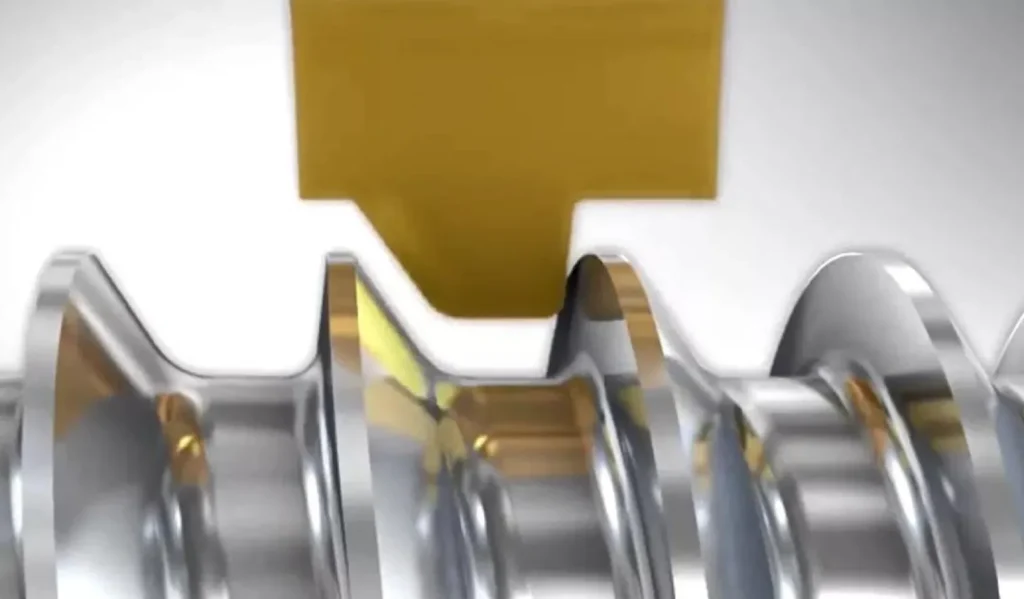嘿,皮膚敏感的朋友!
您有沒有戴上華麗的首飾,卻在一小時後發現身上出現又癢又紅的紅疹?
是啊,我也經歷過。一點都不好玩
但好消息是:有一個解決方案,它被稱為最佳不銹鋼級低敏性。
在本指南中,我們將深入探討低敏性金屬的世界,並特別關注不銹鋼。
到最後,您將清楚知道哪一種等級的不銹鋼最適合您的敏感肌膚。
劇透警告:它是 316L 不銹鋼。但請繼續觀看,因為您需要知道的還有很多!
為何選擇不鏽鋼?抗過敏的金屬冠軍

在進入細節之前,我們先來談談為什麼不銹鋼是敏感肌膚人士的首選。
不銹鋼是:
- 耐用 (可讓您使用很長時間)
- 價格相宜(與黃金或白金等貴金屬相比)
- 耐腐蝕 (沒有綠皮,非常感謝)
- 較不易引起過敏反應(當您選擇適當的等級時)
但問題是:並不是所有的不鏽鋼都具有低過敏性。
有些成績比其他成績要好,能讓那些討厭的過敏反應遠離我們。
不銹鋼對決:316L vs 304
當我們談到低過敏性不銹鋼時,通常會提到兩個等級:
- 316L 不銹鋼
- 304 不銹鋼
兩者都是可靠的選擇,但其中一種是最適合低敏性用途的不銹鋼等級。
我們來分析一下。
316L 不銹鋼:低敏英雄

請聽鼓聲...316L 不鏽鋼是低致敏性的贏家!
以下是為什麼 316L 是最適合敏感肌膚的不銹鋼等級:
- 它的碳含量較低,因此更耐腐蝕
- 含 2-3% 鉬,可增強其對氯化物(例如汗水和海水)的抵抗力
- 不易釋出鎳,鎳是導致大部分金屬過敏的常見過敏原
- 通常稱為「手術鋼」,因為它用於醫療植入物
316L 是適合敏感性皮膚的高階珠寶和手錶的首選。
如果您的皮膚反應超強,這是您最好的選擇。
304 不銹鋼:穩固的優勝者
現在,不要誤會我的意思。304 不鏽鋼也是低敏性珠寶的好選擇。

這是
- 比 316L 更常用
- 一般較便宜
- 仍具有耐腐蝕性,但不及 316L
對於大多數對金屬有輕微敏感的人來說,304 不鏽鋼就很好。
但如果您要找最好中的最好,316L 是您的不二之選。
鋼材背後的科學:為何 316L 勝出
好吧,讓我們先來瞭解一下。是什麼讓 316L 如此特別?
這一切都歸結於構圖:
- 316L 含鎳量 (10-14%) 高於 304 (8-10.5%)
- 但是,316L 更為穩定。
- 這表示它較不會釋出鎳到您的皮膚中。
316L 中的 "L「 代表 」低碳"。較低的碳含量(最大 0.03%)使其更耐腐蝕。
另外,我們之前提到的鉬呢?它能在金屬表面形成保護層,進一步降低發生任何惡劣反應的機會。
但等等,其他低過敏選項呢?
我知道你在想什麼「對於我們這些敏感皮膚的人來說,不銹鋼是唯一的選擇嗎?」
完全不會!讓我們來看看其他一些受歡迎的低過敏性金屬:
鈦金屬:輕盈奢華的選擇
鈦金屬經常被標榜為最不易過敏的金屬。原因如下:
- 具有生物相容性(您的身體喜歡它)
- 堅固且輕巧
- 高度耐腐蝕
- 不含任何鎳元素
聽起來很完美,對吧?差不多吧。缺點是鈦金屬可能比不銹鋼貴,而且較難加工。
鈮:鮮為人知的寶石
鎳是另一種極佳的低過敏性選擇:
- 極罕有的過敏反應
- 可經陽極處理,創造出美麗的色彩
- 高度耐腐蝕
然而,它不像不鏽鋼或鈦金屬那麼廣泛可用。
黃金:經典之選(附註)
黃金,尤其是 14K 或更高的黃金,通常被認為是低過敏性的。但是有一個問題:
- 純金(24K)對於日常首飾而言太軟了
- 低K金含有其他金屬,可能引起反應
- 比不銹鋼貴得多
白金級:頂級之選
白金是另一種絕佳的低過敏選擇:
- 非常純淨 (通常為 95% 或以上)
- 極度耐用
- 很少引起過敏反應
缺點是什麼?它是最昂貴的金屬之一。
鎳困境:為什麼這很重要?
現在,讓我們來談談房間裡的大象:鎳。
鎳是最常見的金屬過敏原。事實上,估計約有 10-20% 的人口對鎳敏感。
棘手的問題來了:316L 和 304 不銹鋼都含有鎳。那麼,為什麼它們被認為是低過敏的呢?
這一切都與穩定性有關:
- 在優質不銹鋼中,鎳與金屬結構緊密結合。
- 這意味著它更不容易滲出並引起反應
- 316L 比 304 更為穩定,因此成為首選
真實的談話:我的低過敏金屬個人旅程
我自己也是敏感性皮膚,而且我已經被不同的金屬折磨過了。
當我第一次發現 316L 不銹鋼時,它改變了我的人生。
我最喜歡的項鍊或手錶再也不會讓我的皮膚發紅發癢了。
但問題是:每個人的肌膚都不同。
適用於我的方法可能不適用於您。
最重要的是找到最適合您獨特肌膚的方法。
常見問題:常見問題解答
讓我們來解決一些關於低敏性不銹鋼的常見問題:
問:哪種不銹鋼具有低過敏性? 答:316L 和 304 不鏽鋼都被認為是低致敏性的,其中 316L 是嚴重過敏者的首選。
問:316 不銹鋼是否適合敏感性皮膚? 答:絕對可以!316(特別是 316L)不銹鋼因其高耐腐蝕性和低鎳釋放量,非常適合敏感性皮膚使用。
問:100% 對何種金屬不易過敏? 答: 雖然沒有任何一種金屬能保證 100% 對每個人都不會過敏,但鈦和铌已相當接近。如果您有嚴重的金屬過敏,它們是您最好的選擇。
問:316L 鋼是否低過敏性? 答: 是的,316L 不鏽鋼被認為具有高度低過敏性,常用於醫療植入物和高級珠寶首飾。
問:304 不銹鋼是否低致敏性? 答:是的,304 不銹鋼通常被認為是低過敏性的,儘管不及 316L。對於大多數對金屬有輕微過敏反應的人來說,這是一個很好的選擇。
問:鈦是否低過敏性? 答: 鈦金屬的確具有低過敏性,通常會建議對金屬嚴重過敏的人使用。
問:如果我對其他金屬過敏,可以佩戴黃金嗎? 答:這取決於K金的硬度和您的特殊敏感度。較高的 K 金(18K 或 24K)較不容易引起反應,但也較軟和昂貴。
低過敏性首飾的保養秘訣
想要確保您的低敏性不銹鋼保持最佳狀態嗎?以下是一些快速提示:
- 定期使用溫和的肥皂和水清潔
- 避免接觸刺激性化學品(包括香水和乳液)
- 儲存於陰涼乾燥的地方
- 游泳或淋浴前請除下
- 不要每天 24 小時都戴著 - 讓您的肌膚時常休息一下
低過敏金屬的未來
隨著科技的進步,我們看到了新的合金和處理方法,它們承諾了更好的低敏特性。
請留意
- 可增強耐腐蝕性的奈米塗層
- 鎳含量更低的新型合金
- 鈦金屬加工技術的進步,使其價格更為合理
- 由醫學研究啟發的生物相容性材料創新
如何選擇適合您的低敏性首飾
好了,現在您知道 316L 不鏽鋼是最適合低敏性用途的材質。但是,您究竟該如何選擇合適的珠寶呢?以下是一些提示:
- 尋找聲譽良好的賣家,他們會指定不銹鋼的等級
- 不要害怕詢問有關金屬成分的問題
- 先從便宜的小片開始,測試皮膚的反應
- 如果您不確定,可考慮接受皮膚科醫生的斑塊測試。
- 請記住,即使是低過敏性金屬也會對某些人產生反應。
成本因素:平衡品質與預算
我們先談談錢的問題。是的,316L 不銹鋼通常比 304 貴。但這就是為什麼它是值得的:
- 不易引起反應 = 佩戴更舒適
- 更高的耐腐蝕性 = 使用時間更長
- 更好的整體品質 = 更久的外觀
把它當成是對您的舒適度和風格的投資。
首飾以外的用途:低過敏性不銹鋼的其他用途
低過敏不鏽鋼不僅適用於珠寶首飾。它被用於各種用途:
- 醫療植入物和手術工具
- 身體穿孔首飾
- 錶殼和錶帶
- 烹飪用具和廚具
- 眼鏡架
因此,如果您是敏感性皮膚,也請留意這些產品是否採用 316L 不鏽鋼!
總結:邁向無痕風格之路
尋找最佳的低過敏性不銹鋼不一定要頭痛。
請記住
- 316L 是您的首選,可提供最高的低過敏特性
- 304 是穩固的亞軍
- 如果您需要更低敏性的產品,別忘了鈦金屬。
說到底,最重要的是找到適合您和您肌膚的產品。
不要害怕(安全地)嘗試,找到您的完美搭配。
您的肌膚會感謝您,而您也會立即自信地戴上首飾。
就是這樣,各位。對於低過敏性用途而言,最好的不鏽鋼等級是 316L。它是低過敏性不銹鋼的黃金標準(具有諷刺意味)。
無論您是選購新腕錶、時尚手鍊,甚至是烹飪用具,都要留意是否有 316L 標籤。
您的敏感肌膚會感謝您,而您也可以放心地裝飾。
請記住,人生苦短,不要讓首飾搔癢。給自己(和皮膚)最好的!
有更多關於低敏不銹鋼的問題嗎?請在下方留言,讓我們繼續討論!
畢竟,在為敏感性肌膚尋找最佳解決方案時,我們都在一起。
我的朋友們,保持時尚又不癢!
如需加工不銹鋼,請 聯絡我們!



